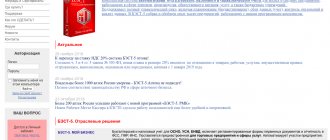2-NDFL - a certificate of income of an individual, which is used both for tax reporting and for personal purposes of taxpayers. It reflects the amount of income and the amount of personal income tax withheld for the reporting period. This form is submitted to the Federal Tax Service by organizations and entrepreneurs paying income to individuals. The certificate is filled out for each person separately. The form of the certificate and the procedure for filling it out were approved by the Order of the Federal Tax Service dated November 30, 2015 No. ММВ-7-11/ [email protected] (last edition according to the Order of the Federal Tax Service dated January 17, 2018 No. ММВ-7-11/ [email protected] ).
since 2019 ! Read in the article: New form 2-NDFL from 2020 - sample filling
When is Form 2-NDFL needed?
The main purpose of 2-NDFL is reporting to the Federal Tax Service . Inspectors need it to check whether the tax agent (most often the employer) has calculated the personal income tax amount correctly.
The certificate is submitted by the tax agent in the following cases:
- If he paid income subject to personal income tax.
- If he paid income from which personal income tax cannot be withheld. In this case, within two months after the end of the tax period, this must be reported to the Federal Tax Service and the certificate in question must be submitted based on the results of the tax period.
Another purpose of 2-NDFL is the issuance to individuals to whom income payments were made, upon their application. Typically this is required:
- to fill out the 3-NDFL declaration (information from 2-NDFL is needed);
- for obtaining a loan;
- to provide a new job in order to receive a tax deduction (in this case, income from the beginning of the year is taken into account, including from the previous place of work, if it has changed);
- for other purposes.
The employee is not required to indicate in the application why he needed 2-NDFL. In any case, the tax agent is obliged to issue this certificate.
Report form 2-NDFL was changed by order dated January 17, 2018 No. ММВ-7-11/ [email protected] In our article we give an example of filling out the new form.
You can !
Personal income tax in 2020: what are the changes in the rate
Personal income tax in 2020: what changes in the rate?
An important bill No. 1148107-6 has been submitted to the State Duma of the Russian Federation for consideration. The topic is progressive personal income tax rates in order to redistribute the tax burden on citizens. What awaits us if it is adopted? If the Russian Government supports the plans of the developers, taxes will be charged and paid only on income over 180,000 rubles. In the meantime, calculations are made at the previous 13%, regardless of the amount of total income.
Income tax in 2020: what changes will occur with the introduction of progressive rates:
- Full exemption from personal income tax will be given to those citizens whose annual earnings do not exceed 180,000 rubles, which is 15,000 rubles monthly.
- Citizens with a total annual income of over 180,000 rubles, but not more than 2,400,000 rubles, will pay personal income tax at the current rate of 13% in 2020. The monthly income is 15,000-200,000 rubles.
- Citizens with a total annual income of over 2,400,000 rubles, but not more than 100,000,000 rubles, will pay personal income tax at a rate of 30%.
- Citizens with a total annual income of more than 100,000,000 rubles will pay personal income tax at a rate of 70%.
Progressive rates table for 2020:
| Amount of income (total per year), in rubles | Rate, % |
| Up to 180000 | — |
| 180000-2400000 | 13% from income over 180,000 |
| 2400001-100000000 | 288600 fixed + 30% on income over 2400000 |
| Over 100000000 | 29568600 fixed + 70% from income over 100000000 |
Submission deadlines
Everything regarding the procedure for filling out the form is specified in the order of the Federal Tax Service dated October 30, 2015 No. ММВ-7–11/ [email protected] This document also approved the format for sending 2-NDFL in electronic form.
The certificate is signed directly by the head of the organization (IP) or by a person authorized to sign an order or other internal document. Thus, 2-NDFL can be signed by the chief accountant or his deputy, the accountant responsible for payroll, and so on.
The deadlines for submitting a certificate in general are as follows:
- 2-NDFL with sign 1 - no later than April 1,
- 2-NDFL with sign 2 - no later than March 1 .
Certificate 2-NDFL for 2017 with sign 1 is submitted before April 2, 2020 , since April 1 falls on a Sunday.
Paying payroll taxes in 2020
The wages of citizens, together with a significant part of other income, are subject to personal income tax.
At the same time, the personal income tax rate 2020 directly depends on the status of the taxpayer, whether he is a resident or non-resident of the Russian Federation. Residents/non-residents. If a taxpayer stays for more than 183 calendar days during the last year in the Russian Federation, he is officially considered a resident of the Russian Federation. The time spent in the country is not interrupted, the person does not travel outside the state for short-term (less than six months) training or treatment. Otherwise, if you spend less than 183 calendar days on the territory of the Russian Federation, the taxpayer receives non-resident status.
Personal income tax rate in 2020 for non-residents/residents. Often, the income of residents is taxed at a rate of 13%, and non-residents - 30%.
However, an employee's tax status may change throughout the year. When a non-resident becomes a resident, tax is required to be levied at a rate of 13 percent. It is important to take into account that the tax status must be clarified at the end of the year and, if necessary, personal income tax must be recalculated at the appropriate rate.
The described status applies both to foreign citizens receiving income on the territory of the Russian Federation and to citizens of the Russian Federation.
Procedure for filling out form 2-NDFL
The help consists of a title and five sections:
- Heading
- Section 1 “Data about the tax agent”
- Section 2 “Data about an individual - recipient of income”
- Section 3 “Income taxed at the rate of __%”
- Section 4 “Standard, social and property tax deductions”
- Section 5 “Total amounts of income and tax”
Heading
Example of filling out a header
The header should include:
The year for which the certificate is submitted, for example 2017.
number - continuous and sequential numbering, without breaks or repetitions. The numbers start from 1 and continue within the reporting year. Starting next year, the numbering will start again from 1. For a corrective or canceling certificate, the number of the primary certificate (that is, previously submitted) is indicated.
From - date of the certificate in the format DD.MM.YYYY, for example 02/09/2018. For a corrective or canceling certificate, also the current date.
The sign is indicated by the code:
- The certificate is submitted in relation to persons for whom personal income tax has been withheld in full, including at the request of an individual
- The certificate is submitted in relation to persons for whom personal income tax is not withheld
- The certificate is submitted in relation to persons for whom personal income tax is withheld in full by the legal successor of the tax agent
- The certificate is submitted in relation to persons for whom personal income tax has not been withheld by the legal successor of the tax agent
The most commonly used code is 1.
Correction number - indicate 00 for the primary certificate, 01, etc. - for correcting, 99 - for canceling.
in the Federal Tax Service - the code of the tax inspectorate for accounting.
Section 1. Information about the tax agent
An example of filling out section 1
Code according to OKTMO - the parameters of the division that paid the income are indicated (if the head one - the codes of the head one, if the separate one - the codes of the separate division) according to the All-Russian Classifier of Municipal Territories OK 033-2013, approved. by order of Rosstandart dated June 14, 2013 No. 159-st. The field consists of 11 acquaintances. If the code has 8 characters, no characters are placed on the right.
If during the reporting year an employee worked in several departments located in territories with different OKTMO codes, then for each department you need to issue your own certificate and indicate your code in it.
Entrepreneurs put a code on UTII or PSN according to the place of activity.
Individual entrepreneurs using other taxation systems, as well as notaries, lawyers and others, set the code at their place of residence.
The legal successor of the tax agent indicates the OKTMO code at the location of the reorganized organization or a separate division of the reorganized organization.
TIN - 10 characters for legal entities, 12 characters for individual entrepreneurs.
Checkpoint - to be filled out only by legal entities. If an organization has a separate division, a checkpoint is placed at the location of the separate division.
If during the reporting year an employee worked in several departments, then for each department you need to issue your own certificate and indicate your checkpoint in it.
Tax agent - the abbreviated name (in case of absence - the full name) of the organization is indicated according to its constituent documents. In this case, the content part (abbreviation or name) is located at the beginning of the line. Examples: “school No. 25”, “OKB “Vympel”.
If the Certificate is submitted by the legal successor of the reorganized organization, the name of the reorganized organization or a separate division of the reorganized organization is indicated.
Entrepreneurs enter their last name, first name, and patronymic according to their identification document. Abbreviations are not allowed. A double surname is written with a hyphen. Example: Nemirovich-Danchenko Vladimir Ivanovich.
The form of reorganization (liquidation) is indicated by the code:
- Liquidation
- Conversion
- Merger
- Separation
- Accession
- Division with simultaneous accession
If the organization is not liquidated, transformed, etc., then the field remains empty.
The fields “Reorganization (liquidation) form (code)” and “TIN/KPP of the reorganized organization” are required when filling out the “Characteristic” field with the value “3” or “4”
TIN/KPP of a reorganized organization - indicated for a reorganized organization or a separate division of a reorganized organization.
Section 2. Information about the individual recipient of the income
An example of filling out section 2 of
the Taxpayer Identification Number in the Russian Federation - the Taxpayer Identification Number of an individual, confirming registration with the Federal Tax Service. If there is no TIN, this field is not filled in.
TIN in the country of citizenship - indicated if the foreigner has a TIN or its equivalent. For citizens of the Russian Federation, the field is not filled in.
Last name, first name, patronymic - indicated according to the identity document indicated below. Middle name if available. Abbreviations are not allowed. To indicate the full name of foreigners, you can use the Latin alphabet.
Taxpayer status - indicate the code:
- for a resident of the Russian Federation
- for non-residents of the Russian Federation
- for a non-resident of the Russian Federation recognized as a highly qualified specialist
- for participants of the State program to assist the voluntary resettlement to Russia of compatriots living abroad who are not residents of the Russian Federation
- for refugees and persons granted temporary asylum in Russia who are not residents of the Russian Federation
- for foreign citizens working in Russia on the basis of a patent
If during the year an individual changed citizenship and at a certain period was a resident of the Russian Federation, a 1 is given. For foreigners working on the basis of a patent, in any case, a 6 is given.
Date of birth - date in the format DD.MM.YYYY, for example 04/01/1992.
Citizenship - indicate the code according to the All-Russian Classifier of Countries of the World (OKSM). For Russian citizens - code 643 . If an individual does not have citizenship, the code of the country that issued the identity document is indicated.
The code of the identification document is indicated according to the reference book “Codes of types of documents proving the identity of the taxpayer” of Appendix 1 of the Order of the Federal Tax Service No. ММВ-7-11 / [email protected] Example: 21 - Russian Federation passport, 07 - military ID.
Series and number - the details of the document are indicated: series and number of the document, the “No” sign is not placed.
Residence address, zip code, district, city, etc. — filling out all address fields was canceled by order of the Federal Tax Service dated January 17, 2018 No. ММВ-7-11/ [email protected]
Section 3. Income taxed at the rate of __%
Example of filling out Section 3
Section 3 indicates information on income accrued and actually received by an individual in cash or in kind, as well as in the form of material benefits, by month of the tax period and corresponding professional deductions.
Standard, social and property tax deductions are reflected in section 4.
Income for the previous year paid in the next year is reflected in the certificate for the previous year. If income was paid after the certificate for the previous year was submitted (for example, in April of the next year), it is necessary to issue a corrective certificate.
When issuing a certificate with features 1 and 3 , this section indicates all income: both those from which personal income tax is withheld and those from which personal income tax is not withheld.
When issuing a certificate with features 2 and 4, this section indicates income from which the tax agent did not withhold personal income tax.
When drawing up a cancellation certificate, section 3 is not completed.
The heading indicates at what rate __% the tax amounts are calculated. If during the reporting year an individual was paid income at different rates, this section is completed for each rate.
What personal income tax rates may be:
- 13% — the basic rate for tax residents of the Russian Federation. This rate applies to: wages, remuneration under civil contracts, income from the sale of property, dividends, etc. In some cases, the income of non-residents is taxed at a rate of 13%: from employment; from carrying out labor activities as a highly qualified specialist; from the implementation of labor activities by participants in the State Program for Promoting the Voluntary Resettlement of Compatriots Living Abroad to the Russian Federation; from the performance of labor duties by crew members of ships flying the Russian flag
- 15% — rate for non-residents of the Russian Federation receiving dividends from Russian organizations
- 30% — rate for other income of non-resident individuals
- 35% — tax rate of income from winnings, prizes, interest income on deposits and in some other cases
Month - the number of the month for which the income was accrued is indicated in chronological order.
Income code —indicate the corresponding income code, selected from the “Taxpayer Income Type Codes.”
Amount of income —the specified income code reflects the amount of accrued and actually received income.
When issuing a certificate with attribute 2 or 4, the amount of income from which personal income tax was not withheld is indicated.
Deduction code - opposite those types of income for which appropriate deductions are provided, or which are not subject to taxation in full, indicate the corresponding deduction code, selected from the “Codes of types of taxpayer deductions”.
For income referred to in Articles 214.1, 214.2 and 214.3 of the Tax Code of the Russian Federation (income on securities, deposits, repos), several deduction codes may be indicated for one income code. Then the first code is reflected opposite the income code, and the rest are displayed in the lines below without filling out the “Month”, “Income Code” and “Income Amount” fields.
The deduction amount is filled in only for income for which professional deductions are provided, and for income that is not subject to personal income tax in full in accordance with Article 217 of the Tax Code of the Russian Federation. The amount of deduction should not exceed the amount of income.
Section 4. Standard, social and property tax deductions
Example of filling out section 4
The specified deductions are provided only on income subject to personal income tax at a rate of 13%, and only to residents of Russia. When drawing up a cancellation certificate, section 4 is not completed.
Deduction code - indicate the corresponding standard deduction code from the reference book “Codes of types of taxpayer deductions” (Appendix No. 2 to the order of the Federal Tax Service of Russia dated September 10, 2015 No. ММВ-7-11 / [email protected] ). If the type of deduction is not in the directory, code 620 should be indicated (letter of the Federal Tax Service of Russia dated February 11, 2014 No. BS-4-11/2189).
The deduction amount is according to the specified code.
Notification confirming the right to social tax deduction; Notification confirming the right to a property tax deduction - to be filled out in the case of providing a social/property deduction. The number and date of the notification are indicated, as well as the code of the tax authority that issued the notification. If there are several notifications, several lines are filled in to reflect the details of all notifications.
Section 5. Total Income and Tax Amounts
Example of filling out section 5
Section 5 reflects the amounts of accrued and actually received income, as well as the amounts of accrued, withheld and transferred personal income tax at the rate specified in section 3.
If during the reporting year an individual was paid income at different rates, this section is completed for each rate.
Data on accrued personal income tax amounts must be rounded to full rubles in accordance with paragraph 6 of Article 52 of the Code - a tax amount of less than 50 kopecks is discarded, and a tax amount of 50 kopecks or more is rounded to a full ruble...
When drawing up a cancellation certificate, section 5 is not completed.
The total amount of income is the amount of accrued and actually received income without taking into account the deductions reflected in sections 3 and 4.
When issuing a certificate with features 2 and 4, this paragraph indicates the total amount of income from which the tax agent did not withhold personal income tax and which is reflected in section 3 of the certificate.
Tax base - the base from which personal income tax was calculated. Equals the difference between the “Total Amount of Income” and the total amount of deductions reflected in sections 3 and 4 of the certificate.
Amount of tax calculated - The total amount of accrued personal income tax.
The amount of fixed advance payments - the accrued personal income tax is reduced by this amount.
Amount of tax withheld - the total amount of personal income tax withheld. For reference, signs 2 or 4 are marked with a zero.
The tax amount transferred is the total amount of personal income tax transferred. For reference, signs 2 or 4 are marked with a zero.
The amount of tax over-withheld by the tax agent is the over-withheld amount of personal income tax not returned by the tax agent, as well as the amount of overpayment of tax resulting from the fact that the tax status of an individual has changed in the reporting year. For reference, signs 2 or 4 are marked with a zero.
The amount of tax not withheld by the tax agent is the amount of accrued personal income tax that the tax agent did not withhold in the reporting period.
A notification confirming the right to reduce tax on fixed advance payments is filled out if there is a corresponding notification. The number and date of the notification are indicated, as well as the code of the tax authority that issued the notification.
Final part
Example of filling out the
basement Tax agent - indicate the code:
- if the Certificate is submitted by a tax agent (successor of the tax agent)
- if the Certificate is submitted by a representative of the tax agent (successor of the tax agent)
Full name - indicate the full last name, first name, patronymic (if any) of the person submitting the certificate.
The name of the document confirming the authority of the representative - is indicated in the case when the certificate is submitted by the representative.
When there is no income tax
Information on tax-free payments is entirely contained in Article 217 of the Tax Code of the Russian Federation. It applies to all individuals, regardless of their status. A clear delineation of such payments allows you to avoid disagreements and demands with tax authorities.
Every accountant and employee in general should know that they are not subject to personal income tax in 2020. The table below will help structure this information more clearly according to the most frequent payments to individuals.
| What is not subject to personal income tax in 2020: table | |
| Nature of payment | Explanations and additions |
| Pension payments | Various social supplements to pensioners and benefits from the state are also not taxed. The exception is hospital benefits. |
| Alimony | Regardless of their size |
| Scholarships | We are talking about payments as part of training at universities and mid-level educational institutions |
| Compensation payments | The rule applies to payments at the federal, regional and local levels. We are talking about several types of compensation: · received in connection with dismissal (not counting compensation for vacation that the employee did not have time to use); · reimbursement of expenses for utility bills; · compensation for damage caused at the place of work, etc. |
| Free assistance in the form of grants | They can be provided by the state or special organizations mentioned in a special list of the Russian Government. |
| One-time payments | This also includes financial assistance. The following types of one-time payments are not subject to taxation: · employees who have lost close relatives (regardless of the amount of such payment); · the family of a deceased employee who worked in the organization (there is no need to pay personal income tax on the entire amount of assistance provided); · financial assistance to employees of the organization who become parents/adoptive parents during the first year (there is no tax on amounts up to 50,000 rubles for both parents). |
| Financial assistance to retired employees | Regardless of whether old age or disability was the reason for leaving work. There is no need to pay tax if the amount of payments for the year does not exceed 4,000 rubles. |
| Reimbursement of treatment expenses | It concerns payments not only to current, but also to former employees of the organization who have retired. They use their funds to purchase medications prescribed by the doctor. |
| Payment for treatment of an employee or his family from the employer’s profit | This also applies to employees dismissed due to retirement. This type of income does not require payment of tax only if the money was taken from the company's profit after paying all taxes |
| Daily allowance | No more than 700 rubles for each day in case of a business trip within the country. For foreign business trips, the maximum amount is 2,500 rubles. |
| Present | Regardless of whether they were received from an organization or a private entrepreneur. The cost of the gift should not exceed 4,000 rubles. Otherwise you will have to pay tax. |
This list also includes some other types of payments. Please note that the list of income not subject to personal income tax in 2020 is closed. The payments listed in our table do not require payment of tax not only by residents, but also by non-residents of the Russian Federation.
Also see “Personal income tax on financial assistance”.
Sample of filling out the 2-NDFL certificate in 2018
2-NDFL - new form from January 17, 2018
and an example of filling out 2-NDFL
You can download:
- FORM Certificate of income of an individual 2-NDFL (.xls, 54 Kb)
- EXAMPLE of filling out a Certificate of Income for an individual 2-NDFL (.xls, 72 Kb)
Personal income tax of a foreign citizen working on the basis of a patent in 2020
If a foreign worker has acquired a patent to work in the Russian Federation, he must independently transfer the established advance payment for personal income tax to the budget.
After a foreign citizen is hired, personal income tax on his income is calculated and withheld by the employer - the tax agent. The tax rate is 13 percent regardless of whether the foreign citizen is a resident.
Personal income tax, which is transferred by a foreign employee in the form of an established advance payment, must be counted towards the payment of personal income tax from wages.
Income codes and deduction codes
Last year, changes were made to the income codes . Some of them have been clarified, new ones have been added, and old codes have disappeared (for example, 1543 and 2791).
Below we list the most current income codes.
Popular income codes for 2-NDFL
| Code | Description |
| 1010 | dividends |
| 2000 | wage |
| 2010 | remuneration under a civil contract for the performance of work (provision of services) |
| 2012 | vacation pay |
| 2013 | compensation for unused vacation |
| 2300 | temporary disability benefit |
| 2710 | financial assistance to employees (except for financial assistance issued in connection with the death of a family member, the birth of a child, a natural disaster or other emergency circumstances) |
At the end of December 2020, the list of deduction codes changed . In particular, previously there were general codes for parents, including adoptive parents, as well as guardians, adoptive parents and trustees. Since new deduction amounts were established for different categories, these codes were separated.
The most popular deduction codes are in the following table.
Popular deduction codes for 2-NDFL
| Code | Description |
| 126 | standard deduction for the first child to a parent (single amount) - 1,400 rubles. |
| 127 | standard deduction for a second child to a parent (single amount) - 1,400 rubles. |
| 128 | standard deduction for the third and next child to the parent (single amount) |
| 311 | property deduction in the amount spent on the purchase (construction) of housing |
| 327 | social deduction for employee expenses on non-state pension provision, voluntary pension insurance, voluntary life insurance |
| 403 | professional deduction under the GPA for the performance of work (rendering services) |
| 501 | deduction from the cost of gifts (up to 4,000 rubles per year) |
| 503 | deduction from the amount of financial assistance (up to 4,000 rubles per year). |
Personal income tax deductions in 2020: what changes
As before, standard deductions when calculating tax are provided by the employer to the employee in the case of the last child. This benefit is available to those citizens whose dependents are minor children under the age of 18, and in case of full-time education - up to 24 years. In particular, the standard deduction is mandatory:
- Parents, including those who are not officially married, but paying alimony amounts, as well as adopted ones.
- For adoptive parents.
- Trustees.
- Spouses, including adoptive parents.
- To guardians.
Note! Spouses of trustees or guardians are not entitled to standard types of deductions, and changes to personal income tax from 2017 are not planned in the submission procedure.
According to the Tax Code of the Russian Federation, namely stat. 218, subcategories of “children’s” deductions have been approved:
- 1400 rub. – submitted for the first/second child.
- 3000 rub. – submitted for the third/subsequent children.
- 6000 rub. – appears for disabled children. Possible registration for guardians, adoptive parents/spouses, trustees since 2016; for disabled children of group I/II under 24 years of age and in full-time education.
- 12000 rub. – for disabled children under the age of majority. Available to parents and their spouses, including adoptive parents.
When determining the number of children, it is necessary to take into account everyone, including adopted, non-adopted and the oldest, even if they are no longer entitled to deductions. This position is confirmed by letters from the Ministry of Finance and the Federal Tax Service (No. 03-04-05/8-1014 dated December 8, 2011, ED-4-3/ [email protected] dated January 23, 2012) and ensures the correct determination of taxes . Double deduction amounts are officially established for certain categories of employees:
- Single parents, also caregivers, adoptive parents, guardians.
- Persons who have provided a written statement with the refusal of the second spouse to use the standard deduction for their employment.
Since 2020, children's deductions for personal income tax are provided annually to personnel within the maximum income limit of 350,000 rubles. Starting from the month in which the specified amount is exceeded, the standard deduction is not taken into account. This rule is also relevant when the parent receives a double benefit in relation to income taxed at a rate of 13%. To confirm the amount of earnings received from previous employers, you will need a 2-NDFL certificate: the changes for 2017 are discussed in detail below.
Note! If there are unpaid time periods in the accounting year, for example, vacation at your own expense, maternity leave, you are allowed to “accumulate” deductions. That is, sum up their amount for non-income months, and when paying remuneration to an employee, take into account the total amount in the tax calculation process. Letters of the Ministry of Finance and the Federal Tax Service No. 03-04-06/53186 dated October 22. 2014, BS-19-11/112 dated May 29, 2020
Double tax deduction
Social deductions: changes 2017
New information regarding personal income tax in 2020 awaits the Russian Federation regarding social deductions provided by the organization to its employees during training. When paying for advanced training with personal funds, an individual has the right to write an application for a deduction at the place of employment. The maximum amount is limited to 120,000 rubles per billing period – a year. Legislative innovation is regulated by stat. 219 NK, namely sub. 6 clause 1. They are not included when calculating the amount of charitable deductions, as well as for expensive treatment and education of children.
Important! Currently, the Duma is considering a project to increase the maximum threshold value of the limit on social deductions: up to 200,000 rubles in total - for treatment and/or training; up to 100,000 rubles – for the education of a child/children.
Penalties
For late filing of 2-NDFL, the following penalties apply:
- fine for an organization under paragraph 1 of Article 126 of the Tax Code - 200 rubles for each certificate not submitted on time ;
- fine for an official under Part 1 of Article 15.6 of the Code of Administrative Offenses of the Russian Federation - 300-500 rubles .
For false information contained in 2-NDFL, for example, for indicating the TIN of another person, a fine of 500 rubles is imposed for each erroneous certificate .
You can avoid sanctions for false information in the standard way: if the error is identified independently, then before the Federal Tax Service Inspectorate discovers it, you need to submit an updated Form 2-NDFL.
Is it worth submitting the certificate in advance to allow time for correction? From the letter of the Ministry of Finance dated June 30, 2016 No. 03-04-06/38424 it follows that this does not make sense.
Explanation . The organization filed 2-NDFL ahead of schedule, for example, in early February. The tax authority found errors when checking the form. The accountant corrected everything and submitted an updated certificate before the end of the period, but the organization was still fined because the errors were discovered by the tax authority .
Personal income tax for a highly qualified specialist: personal income tax VKS 2020
The personal income tax rate in 2020 on income from the labor of highly qualified specialists is always thirteen percent (tax status is not important).
It applies, for example, to wages, allowances for work away from permanent residence, and remuneration to members of the board of directors. A rate of 13 percent is applied to payments accrued during the validity of an employment contract or a civil contract for the implementation of work (provision of services).
Everything that was accrued after completion of the contract is subject to personal income tax at a rate of 30 or 13 percent, based on the tax status. The personal income tax rate in 2020 for income that does not affect work activity for a highly qualified non-resident specialist is 30 percent.
It is applicable in the case of payment of financial assistance, compensation for food costs, and giving gifts.
We draw your attention to the fact that the average salary retained by an employee during vacation (vacation pay) is not included in the category of income from work. Vacation is a period of rest during which a person is relieved from performing his work duties. Consequently, personal income tax should be collected at a rate of 30 percent on vacation funds for a highly qualified non-resident specialist.
Adjustment of 2-NDFL for 2020
No one is immune from annoying mistakes; they can be made in writing a person’s full name, date of birth, tax identification number, passport data, certificate codes, as well as in the amounts of income received and deductions due.
Is it possible to submit an adjustment for 2-NDFL? Not only is it possible, but it is also necessary. Moreover, the company will not have to re-issue a complete block of information on the enterprise due to inaccuracies in one or more certificates. Since 2-NDFL certificates are compiled for each employee, if an error is made in a certain document, the adjustment can only be submitted based on it.
Any error found must be corrected, except for changes that occurred after the information was submitted to the Federal Tax Service. For example, a change in personal information when changing a passport, which occurred after submission to the tax office, is not considered a company error and is exempt from filing adjustments in this regard.








